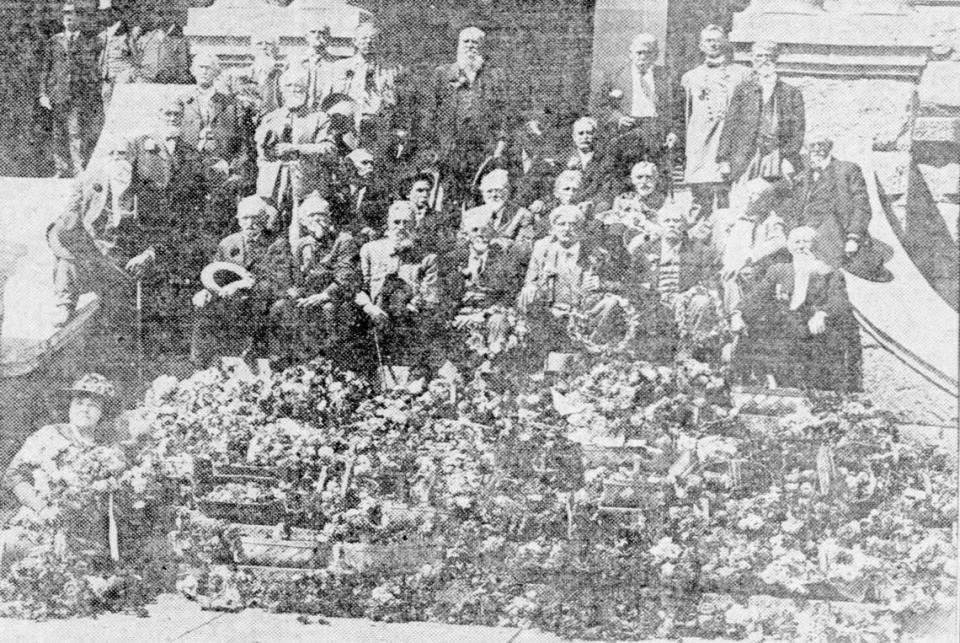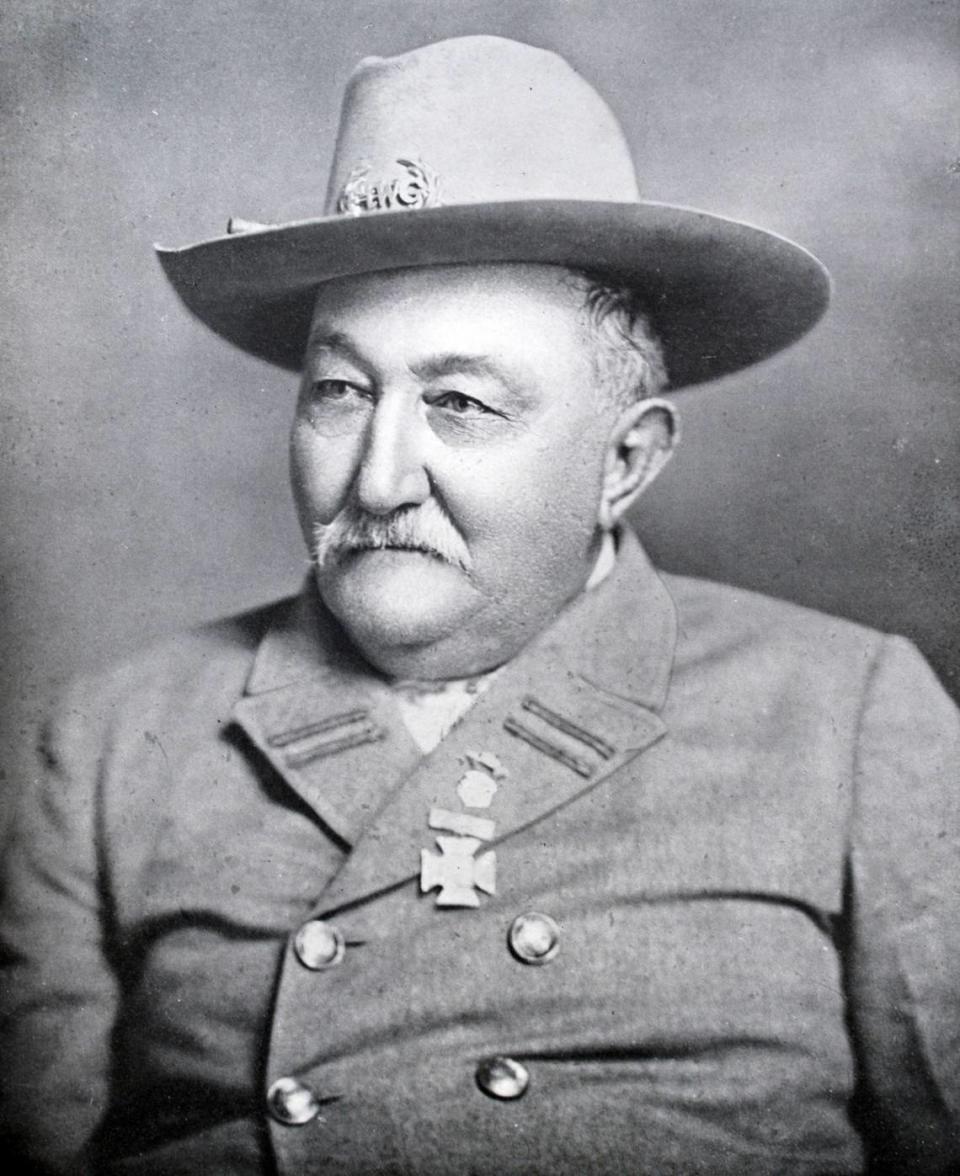After the Civil War, veteran groups from the North and South coexisted in Fort Worth
The Civil War was different from all other U.S. wars in that when Johnny came marching – or in many cases, limping – home, victor and vanquished sometimes had to live together in the same community. Tens of thousands of veterans all over the country were now uneasy neighbors.
For their part, Southerners could not accept the fact that they had lost. They created a “Lost Cause” mythology to explain how their cause was righteous, and that they were only defeated because the North had overwhelming advantages in numbers and resources.
Providing for all those thousands of vets was important to both sides but more challenging for the South. A succession of acts passed by Congress starting in 1862 pensioned every Union soldier and even their widows. Southern soldiers and their widows were dependent on their home states, which were in no condition after the war to take on such a massive expenditure. Texas did not pension its Confederate veterans until 1899, by which time many had already answered the last roll call.
Meanwhile, veterans on the two sides organized themselves to provide support for and enjoy the fellowship of their former brothers in arms. For Union vets, it was the Grand Army of the Republic (GAR), organized in 1866. For Confederate vets, it was the United Confederate Veterans (UCV), organized in 1889. Union vets called their chapters “posts” and Confederate vets called theirs “camps,” but they served the same purpose.
Fort Worth had chapters of both organizations, the William S. Parmly Post for Union vets and the Robert E. Lee Camp for Confederate vets. Parmly Post No. 4 was the fourth GAR post founded in Texas, named for its Fort Worth founder in 1884. The Robert E. Lee Camp was organized by 40 men in 1890. By 1909, it had the largest membership (661) of any camp in the state. A successor organization, the Sons of Confederate Veterans (SCV), was formed in 1897.
Not to be outdone, Union vets formed a second GAR chapter in Fort Worth in 1890, named for beloved Union Gen. John Sedgwick. It was the 39th GAR post in Texas. The different organizations expressed no hostility to each other, though they still squeezed into their old uniforms and marched under their respective flags.
Still, as the members got older, they discovered they had a lot in common, including honoring their dead in the local cemeteries every year. Those commemorations, held in Oakwood Cemetery in Fort Worth, were known as “Decoration Day” to Union vets after 1890. Confederates used the term “Memorial Day” for years before the term was co-opted for a national holiday. A difference in semantics did not prevent the two groups from coming together to support each other on their respective days.

Some of the biggest names in Fort Worth history for more than a half century were Confederate veterans: Khleber Van Zandt, B.B. Paddock, John Peter Smith, C.C. Cummings, and Ephraim M. and Ephraim B. Daggett (father and son).

By contrast, the membership rolls of the GAR posts read like a “Who’s He?” in Fort Worth history. They didn’t become mayors, state representatives, or public officials. The most notable exception was Union vet Timothy Isaiah “Longhair Jim” Courtright, who was elected city marshal three times (1876-1878).
What really erased the deep gulf between the rival organizations was the Spanish-American War of 1898. The former foes stood together against a new enemy. Half a dozen former general officers from the “Late Unpleasantness” re-upped to fight the Spanish, including former Confederate Gen. Joe Wheeler, who at San Juan Hill urged his men to “Get them Yankees, boys!” and had to be reminded they were not fighting Yankees anymore.
Reconciliation was the watchword, or to put it differently, letting bygones be bygones. Still, there was no denying that Confederate veterans were a favored group in Fort Worth. In 1903, the city council voted to give free lots in Oakwood and Pioneers Rest cemeteries to Confederate veterans. The resolution said nothing about Union veterans.
Both veterans groups had a women’s auxiliary. In 1894, the United Daughters of the Confederacy (UDC) was organized in Nashville, Tennessee. Fort Worth wives and daughters formed the Julia Jackson Chapter the next year. For years, Union veterans relied on the indifferently named Women’s Relief Corps (WRC), until 1929 when the Daughters of Union Veterans (DUV) was organized. The job of both auxiliaries was first and foremost to care for their aging menfolk.
They cooked and served at the men’s meetings and conventions, and as the vets grew more frail every year, they pushed their wheelchairs and gave them an arm to lean on getting from point A to point B. Eventually, it got to the point where the women were part of every meeting, not because the men were progressive minded but because they needed the women.
The aging out of the Civil War generation had the effect of smoothing over lingering hard feelings and also dampening some of the patriotic fervor of the old fellows. In 1905, Fort Worth’s William P. Lane, state commander of the Texas division of the SCV, spoke to a reunion convention saying, “The time is swiftly approaching — it will too soon be here – when the last reunion will be held and the last roll will be called, and there will not be a Confederate soldier left to respond. When that time comes, as come it must, then it will be that some noble son, with unspeakable sorrow in his heart and a voice full of tender and unfeigned emotion, will arise and make that saddest of all announcements: ‘The Confederate Soldier is no more.’”
Ironically, the last major Civil War veterans occasion in Texas was in Fort Worth in 1935, and it was the GAR that held it, calling it the Golden Jubilee Encampment (50th) of the GAR. Of the 13 surviving Union vets in Texas — out of an estimated 1,500 at one time — only one was able to attend, 89-year-old John Searer of Houston. To make the Golden Jubilee more than a one-man event, it coincided with the sixth annual convention of the Texas Daughters of Union Veterans. The two-day event was held at the Blackstone Hotel. They were joined by the Julia Jackson Chapter of the UDC for a luncheon.
By this date the former enemies, Blue and Gray, were united in more ways than they were divided.
Author-historian Richard Selcer is a Fort Worth native and proud graduate of Paschal High and TCU.

